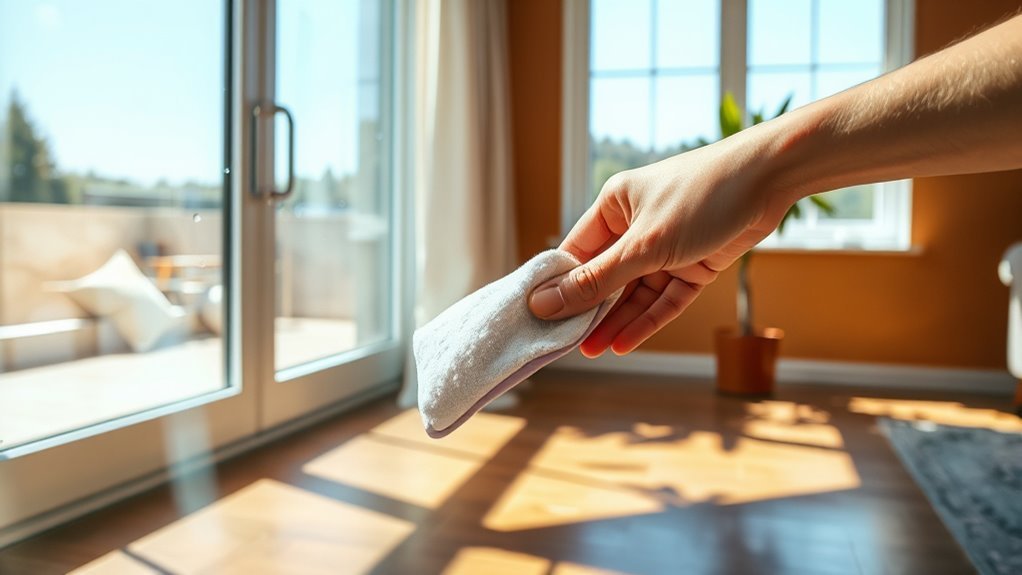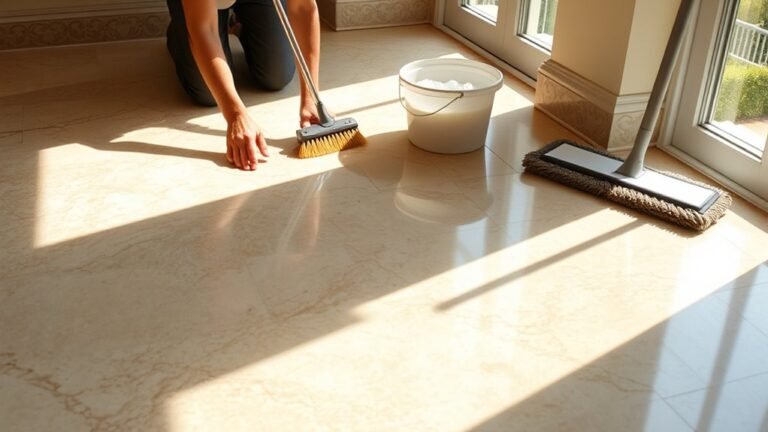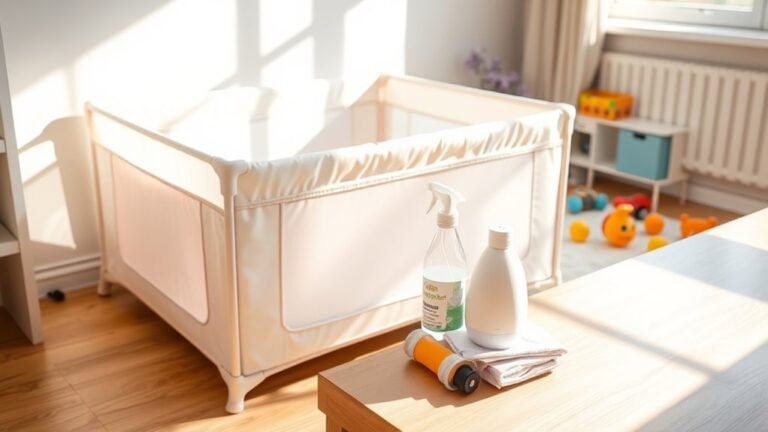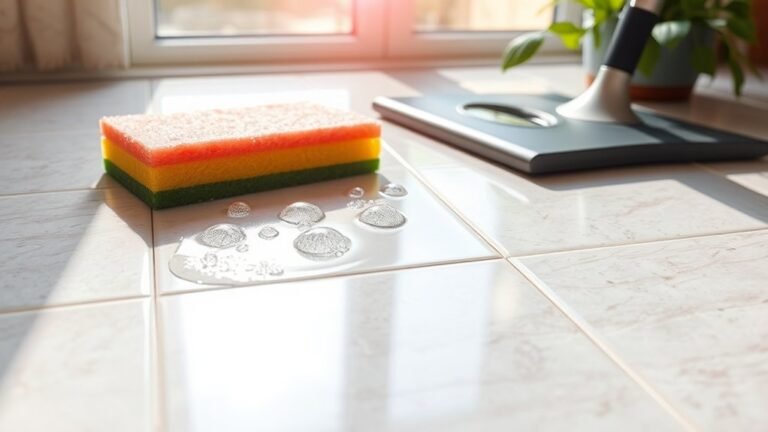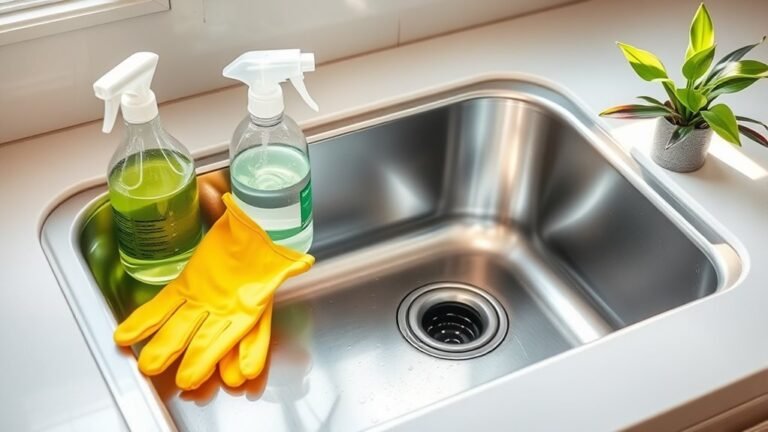Removing Window Stains From Living Room
To remove living room window stains, start by identifying the type—water spots, sap, or dirt. Use vinegar-based cleaners or commercial sprays with a soft cloth or squeegee for streak-free results. For tough stains, try a mix of vinegar and baking soda, letting it sit before scrubbing gently. Regular cleaning and trimming nearby plants help prevent buildup. With the right tools and techniques, your windows can stay crystal clear longer. Keep exploring, and you’ll discover even better ways to maintain spotless glass.
Identifying Different Types of Window Stains
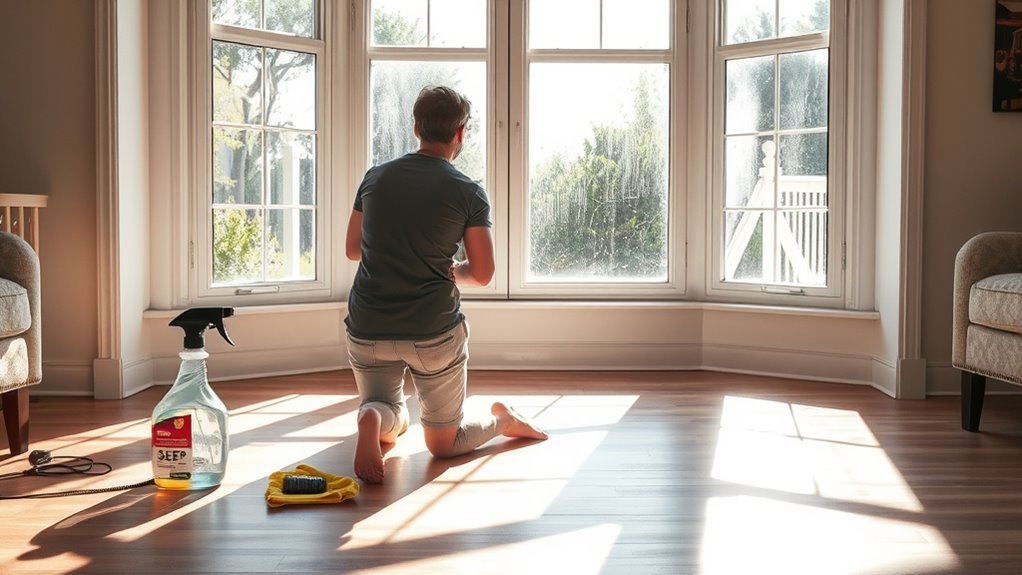
Before you can effectively remove window stains, you need to know what kind they are. Recognizing common stain types lets you choose the best approach and regain your freedom from stubborn marks. Water spots, usually mineral deposits, appear as cloudy patches. Hard water stains feel rough if you run your finger over them. Sap or tree resin leaves sticky, amber-colored residues, often near outdoor windows. Dirt and grime build up as a film that smudges your view. You can identify these stains through simple stain identification methods: touch, look closely, and consider your environment. Once you understand what you’re facing, you can tackle stains with confidence, freeing your windows from anything blocking your light or your outlook.
Essential Tools and Cleaning Supplies
Though knowing the type of stain is essential, having the right tools and cleaning supplies makes all the difference when removing window stains. You’ll want to gather effective cleaning solutions tailored for glass, like vinegar-based sprays or commercial window cleaners, to cut through grime without harsh chemicals. Essential window tools include a sturdy squeegee for streak-free finishes, microfiber cloths that trap dirt without scratching, and a soft-bristle brush for stubborn spots. Don’t forget a spray bottle to apply your cleaning solutions evenly and a scraper for tough residues like paint or stickers. With these tools in hand, you’ll enjoy the freedom to tackle any window stain confidently and restore your living room’s natural light with ease and precision.
Step-by-Step Cleaning Techniques
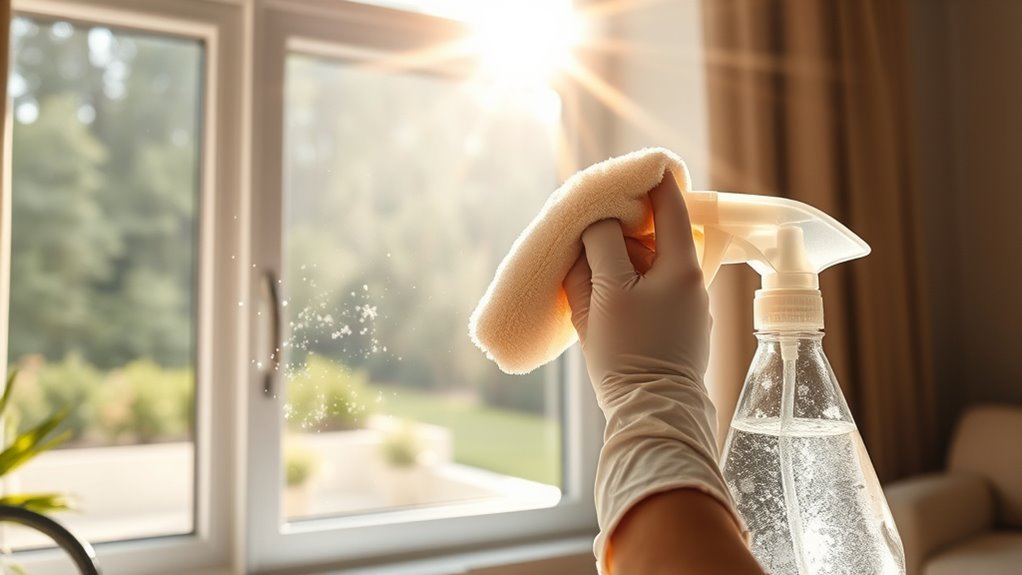
Cleaning your windows effectively involves a few simple, well-ordered steps that guarantee every stain is removed without damage. First, start by dusting off loose dirt with a soft brush or cloth. Next, apply your chosen cleaning solution evenly, focusing on stained areas. Use a microfiber cloth or squeegee to wipe away grime in smooth, overlapping strokes, which prevents streaks. Don’t forget to dry corners and edges thoroughly to avoid water spots. For lasting stain prevention, clean your windows regularly and avoid harsh chemicals that can damage surfaces. By mastering these cleaning techniques, you’ll maintain sparkling windows that let freedom shine through, creating a brighter, more open living space without the hassle or worry of stubborn stains.
Natural Remedies for Tough Stains
Once you’ve mastered basic cleaning techniques, you might still encounter stubborn stains that refuse to budge. Don’t worry—you’ve got natural remedies on your side. Mix a vinegar solution by combining equal parts white vinegar and water in a spray bottle. Spray it on the tough spots and let it sit for a few minutes. For extra grit, sprinkle baking soda directly onto the stain before spraying the vinegar solution; the fizz will help break down grime. Gently scrub with a soft cloth or sponge, then rinse with clean water. These simple, eco-friendly ingredients give you the freedom to clean effectively without harsh chemicals. With a little patience, those stubborn stains won’t stand a chance against your natural cleaning power.
Preventative Measures to Keep Windows Clean Longer
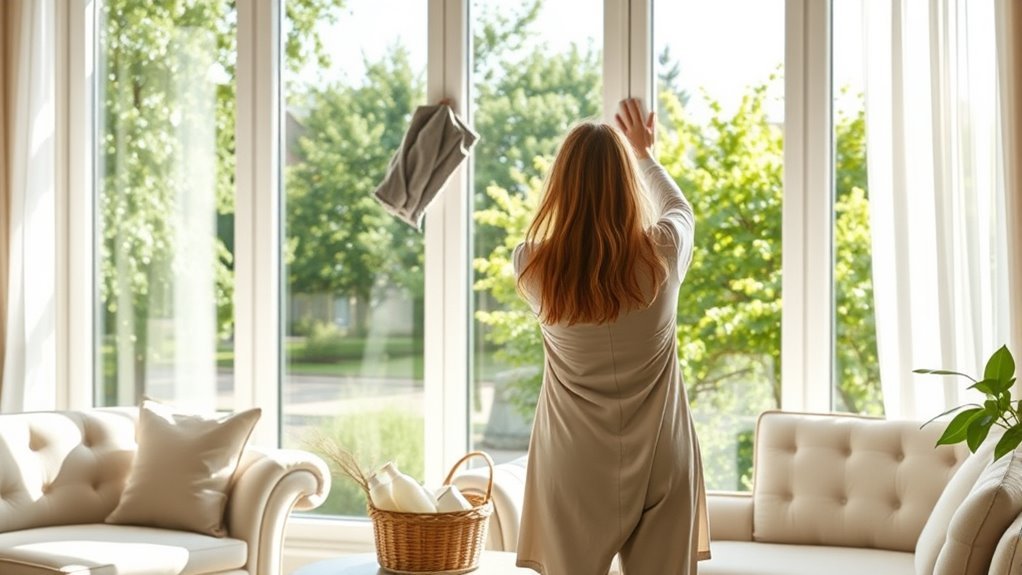
If you want your windows to stay spotless longer, adopting a few simple preventative measures can make all the difference. Start by setting a regular cleaning schedule to prevent dirt and grime from building up. Consistency in your window maintenance helps you catch stains early, making cleaning easier and less time-consuming. You can also protect your windows by trimming nearby plants and trees that may drop sap or pollen. Consider applying a protective coating or using weatherstripping to reduce exposure to moisture and dust. Ventilate your living room regularly to minimize condensation, which often causes stains. By taking these small steps, you’ll enjoy clearer views and less frequent cleaning, freeing up your time for what truly matters.
Frequently Asked Questions
Can Window Stains Damage the Glass Permanently?
You might wonder if window stains can damage the glass permanently. While most stains don’t cause lasting harm if addressed quickly, neglecting them can lead to etching or discoloration that’s tough to reverse. By focusing on regular window maintenance and stain prevention, you keep your windows clear and damage-free. Taking these simple steps means you won’t be stuck dealing with stubborn marks, letting you enjoy your space without restrictions or hassle.
How Often Should Living Room Windows Be Professionally Cleaned?
You might wonder about the ideal window cleaning frequency for your living room windows. To keep them sparkling and clear, it’s smart to schedule professional services at least twice a year. This helps prevent buildup and maintains that fresh, open feeling you want in your space. Of course, if you live in a dusty or rainy area, you could go for more frequent cleanings. Either way, regular care keeps your view free and your home feeling liberating.
Are There Specific Cleaners Safe for Tinted Windows?
You don’t want to risk turning your tinted windows into a foggy mess, right? Luckily, there are tinted window cleaners designed just for you—safe cleaning solutions that won’t strip away that perfect shade you love. You’ve got the freedom to keep your view crystal clear without damaging the tint. Just avoid harsh chemicals and opt for products labeled safe for tinted glass, so you can clean confidently and protect your windows’ sleek look.
Can Hard Water Stains Be Removed Without Scratching Glass?
You can definitely remove hard water stains without scratching your glass by using the right glass cleaners and gentle methods. Avoid abrasive scrubbing tools; instead, try using a mixture of vinegar and water or a commercial glass cleaner designed for delicate surfaces. Soft cloths or microfiber towels work best to keep your freedom intact—no damage or frustration. Just be patient and gentle, and you’ll restore your glass’s clarity without any harm.
What Is the Best Time of Day to Clean Windows?
Isn’t it funny how the best time to clean windows often coincides with avoiding harsh sunlight? You’ll want to pick early morning or late afternoon for cleaning techniques because direct sunlight can dry your cleaning solution too quickly, leaving streaks. When the sun’s softer, you’re free to clean more thoroughly without those sunlight effects messing up your work. So, choose those cooler, shaded hours to make your windows sparkle effortlessly!
